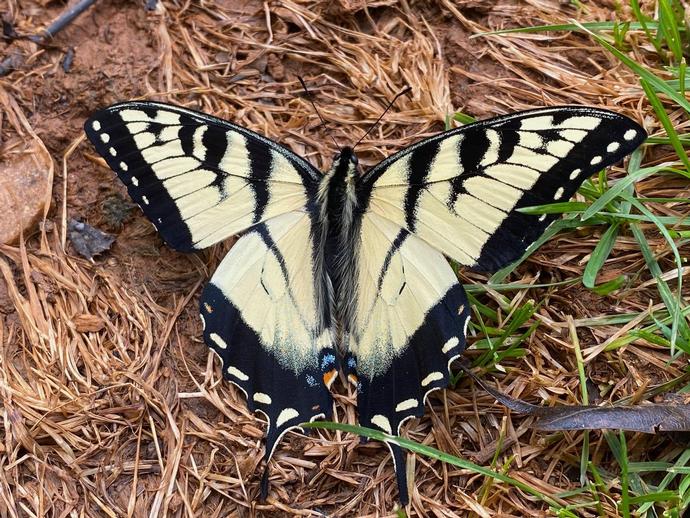April 27, 2021
It's time for the Tuesday edition of #BenInNature presented by our friends at Carter Bank & Trust!
Spring has arrived and the butterflies are on the wing! The eastern tiger swallowtail butterfly (Papilio glaucus) is one of our most common butterflies in Virginia, and it's also our state insect! It's also the state butterfly of Alabama, Delaware, Georgia, North Carolina, and South Carolina. I pity any butterflies that go up against this guy in a popularity contest!
The eastern tiger swallowtail is a common sight in the eastern half of the U.S., and it can be spotted from spring all the way through fall. These butterflies have two to three broods per year, and they overwinter inside the chrysalis in areas with harsh winters. This is why you often see fully-grown adult butterflies in very early spring!
One unusual feature of the eastern tiger swallowtail is that the females are dimorphic.This means that the females can have two different "morphs" or "forms," meaning that depending on genetic variation, two members of the same species can look different. In the case of the eastern tiger swallowtail, females can be either the typical yellow color, or they can also be black in color! The males, meanwhile, are always yellow.
The eastern tiger swallowtail is definitely one of the easiest butterflies to spot. They can be found almost anywhere that has a deciduous forest nearby and are often spotted in fields, woodlands, roadsides, gardens, and near creeks and rivers. The larvae can eat a wide variety of plants and the adults will drink nectar from many different flowers. Given their lack of pickiness when it comes to food and their ability to survive under a wide variety of conditions, the eastern tiger swallowtail is fortunately not considered threatened.
ABOUT #BenInNature
Social distancing can be difficult, but it presents a great opportunity to become reacquainted with nature. In this series of posts, Administrator of Science Ben Williams ventures outdoors to record a snapshot of the unique sights that can be found in the natural world. New updates are posted Monday - Friday, with previous posts highlighted on the weekends. This series of posts is made possible thanks to the support of VMNH Corporate Partner Carter Bank & Trust (www.cbtcares.com).
NATURE PHOTO IDENTIFICATIONS
If you discover something in nature that you would like help identifying, be sure to message us right here on Facebook with a picture (please include location and date of picture) and we'll have our experts help you identify it!

 Hours & Admissions
Hours & Admissions Directions
Directions

